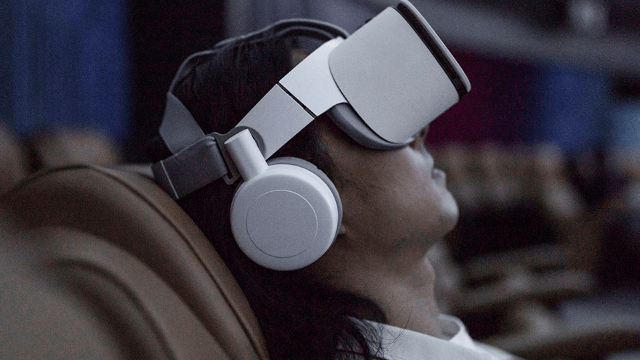
Jun 27, 2023
The world of entertainment has come a long way since the first motion pictures graced our screens over a century ago. With the rapid development of technology and the constant quest for more immersive experiences, today's entertainment landscape is incredibly rich and diverse. Among this space's most impressive and cutting-edge new attractions are the Flying Theater VR experiences, which truly redefine what we think of as entertainment.
Combining the most advanced virtual reality (VR) technology with the exhilarating sensations of a flying theater, this groundbreaking combination promises to offer audiences an unparalleled experience that truly takes entertainment to the skies. In this article, we will explore what makes these flying theater VR experiences so special and why they are set to transform the future of entertainment forever.
What is Flying Theater VR?
First, let's break down the two major components of this experience: the flying theater and virtual reality. A flying theater, also known as a flying simulator, is an amusement park or theme park attraction that uses motion-based technology to simulate the experience of flight. Guests are seated in a theater-like auditorium that moves in sync with the visuals displayed on a large screen, creating an incredibly realistic sensation of soaring through the air.
Virtual reality, on the other hand, is a computer-generated simulation that allows users to interact with a 3D environment through the use of a head-mounted display (HMD) and controller. The result is a highly immersive and realistic experience that has grown increasingly popular in recent years, both for gaming and more artistic purposes.
The Flying Theater VR Experience essentially takes the best of both worlds, combining the thrilling sensation of flying with the incredibly immersive nature of virtual reality technology. By strapping on a VR headset and taking a seat in a flying theater, guests are transported to an extraordinary world where they can live out their wildest dreams of flight and exploration.
The Evolution of Flying Theaters
While the combination of flying theaters and virtual reality is a fairly recent development, the concept of flight simulators has been around for decades. Early flight simulators were primarily designed for military applications and pilot training. These simulators were large-scale, highly sophisticated machines that aimed to recreate the cockpit environment as accurately as possible.
The entertainment industry caught on to the compelling nature of flight simulation and began to develop experiences for a broader audience. The first iterations of flying theaters tended to be large-scale, motion-based attractions, like Disney's Soarin', which opened in 2001 at California Adventure Park. In these early experiences, guests were suspended in the air in front of a massive screen, which displayed breathtaking images of iconic landscapes and locations from around the world.
With the addition of virtual reality tech, what was once a passive visual experience has become a more interactive and dynamic form of entertainment.
Creating Immersive Worlds through VR
The true strength of the Flying Theater VR Experience lies in its capacity for creating immersive and thrilling worlds in which guests can lose themselves. VR technology allows for unparalleled control over the environment, meaning the creative possibilities are endless. From realistic aerial tours of famous cities and landmarks to completely fantastical flights through mythical realms, there are no limits to where these experiences can take audiences.
This level of immersion is enhanced by the integration of incredibly detailed computer-generated imagery, captivating soundscapes, and even the addition of wind and temperature effects, all designed to trick the mind into believing that what is being experienced is real.
The Potential Impact on the Entertainment Industry
As the Flying Theater VR Experience continues to evolve and attract more attention, the broader entertainment industry is likely to take notice. There is already a growing trend towards interactive and immersive experiences, from escape rooms to location-based VR installations. These flying theater VR attractions represent the next step in this progression, with their potential for larger-scale, more elaborate productions that continue to blur the lines between reality and fantasy.
As technology continues to improve and become more affordable, we could see these experiences grow even more immersive and widespread, not just in theme parks but also as standalone attractions or even at-home entertainment options.